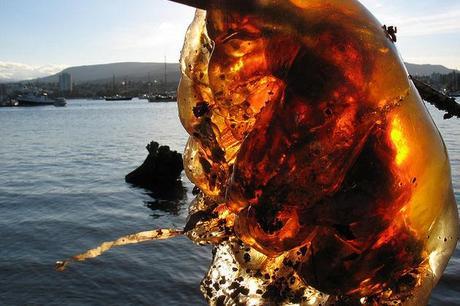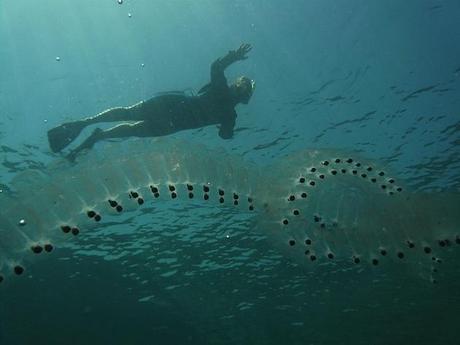
Image: Flickr
One of the world’s largest nuclear power plants had to be taken offline today because it was invaded by moon jellyfish. Yeah, that sounds like the premise for a SyFy original movie, but it actually happens all the time, all over the world. Nuclear plants in California, England, Japan, and Israel have all been thwarted by maurading jellyfish—and their reign of slimy obstructionism appears far from over.
How does this happen? How does the world’s most fearsome mode of energy generation get stopped in its tracks by the world’s most irritating sea creatures? The jellies clog them up, plain and simple.
In Sweden, Stockholm’s Oskarshamn plant, which generates one-tenth of the nation’s power, is comprised of three reactors. They’re boiling water reactors, a lot like the ones at Fukushima. This means that inside the reactor core, there are hundreds of scorchingly hot fuel rods that constantly need to be cooled down. So, the plants pipe water in from nearby bodies of water, which is why so many nuke plants, like Fukushima Daichi and Oskarshamn, are built on the coast.
It also means the pipe that sucks in the seawater is prone to suck up sea creatures along with it. And that’s where the jellies come in. If a smack of jellyfish (yes, a smack) drifts too close to those intake valves, and enough get pulled in, they clog the way and prevent enough cooling water from entering the system—giving rise to a bona fide risk of meltdown if the plant isn’t taken offline.
This is was precisely the risk in July 2011, when wave after wave of jellyfish swarmed into a nuclear plant in Hadera, Israel.
Over the course of three days that month, plant operators removed 100 tons of jellyfish in order to keep it running smoothly. That’s a lot of jellyfish.
That same month, a bloom of jellyfish shut down both reactors at a Scottish nuclear facility.
In 2012, smaller jellyfish-like creatures known as sea salps flooded the intake valves at a nuclear power plant in San Luis Obispo, California, forcing a shutdown.
“The event began Tuesday when southerly winds began blowing the salps into the plant’s cooling water intake cove,” The San Luis Tribune reported at the time. “Plant operators noticed differences in water pressure at the intake structure, indicating the salps were beginning to clog the rolling screens in front of the intake.”
The same thing has since happened to Japanese nuclear power plants, and will likely happen again. In fact, it’s been happening as long as we’ve had power plants that needed cooling down.
According to Steve Haddock, of the Monterrey Bay Aquarium Research Institute, power plants were getting shut down by jellyfish as far back as 1937, when they smothered an Australian plant.
“Only when you have a huge influx of jellies do they overwhelm the flumes,” he told Live Science, and explained that plants are already equipped to filter out the sea creatures. Unfortunately, that tends to happen a lot, especially when massive blooms of jellyfish are under way—it may not be “the newest threat to nuke plants,” but it’s a serious one, and well worth being aware of.

Image: Wikimedia

